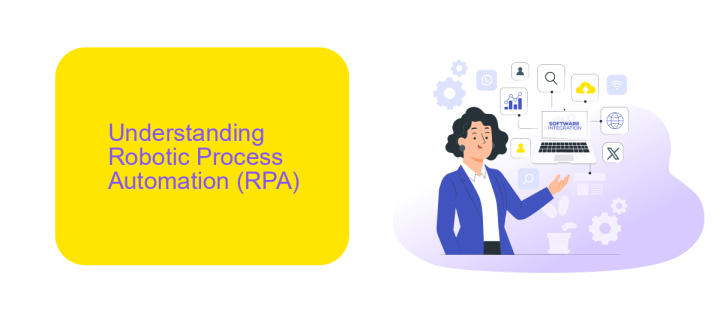Robotic Process Automation vs Workflow Automation
In the rapidly evolving landscape of business technology, Robotic Process Automation (RPA) and Workflow Automation are two powerful tools transforming how organizations operate. While both aim to enhance efficiency and reduce manual tasks, they differ significantly in their applications and capabilities. This article delves into the distinctions between RPA and Workflow Automation, helping you determine which solution best suits your business needs.
Introduction
Robotic Process Automation (RPA) and Workflow Automation are two pivotal technologies transforming the landscape of business operations. While both aim to enhance efficiency and reduce manual effort, they cater to different aspects of automation and offer unique benefits.
- Robotic Process Automation (RPA): Focuses on automating repetitive tasks and processes using software robots.
- Workflow Automation: Involves the orchestration of tasks and processes, ensuring they are executed in a predefined sequence.
Understanding the distinctions between RPA and Workflow Automation is crucial for businesses aiming to optimize their operations. By leveraging tools like ApiX-Drive, organizations can seamlessly integrate various applications and automate complex workflows, ensuring a smooth and efficient operational flow. This article delves into the core differences, benefits, and use cases of RPA and Workflow Automation, providing insights on how to effectively implement them in your business strategy.
Understanding Robotic Process Automation (RPA)

Robotic Process Automation (RPA) refers to the use of software robots to automate highly repetitive and routine tasks usually performed by human workers. These tasks can range from data entry and invoice processing to more complex operations like customer service interactions. RPA tools are designed to mimic human actions within digital systems, enabling organizations to streamline workflows, reduce errors, and improve efficiency. By automating mundane tasks, businesses can free up human employees to focus on more strategic activities, thereby enhancing overall productivity and job satisfaction.
RPA is particularly valuable for its ability to integrate seamlessly with existing systems without the need for extensive modifications. For example, services like ApiX-Drive facilitate the integration of RPA tools with various applications and platforms, making it easier to automate workflows across different systems. This capability allows organizations to optimize their processes and ensure that data flows smoothly between disparate systems, ultimately leading to more cohesive and efficient operations.
Exploring Workflow Automation

Workflow Automation streamlines the sequence of tasks, processes, and approvals that drive business operations. By utilizing software tools, organizations can automate repetitive tasks, ensuring consistency and efficiency. This approach not only reduces human error but also frees up employees to focus on more strategic activities.
- Identify repetitive tasks that can be automated.
- Choose a suitable workflow automation tool.
- Define the workflow and set rules for task execution.
- Integrate with other systems and software, such as ApiX-Drive, to ensure seamless data flow.
- Monitor and optimize the automated workflows regularly.
One significant advantage of workflow automation is the ability to integrate various services and applications effortlessly. Tools like ApiX-Drive facilitate these integrations, allowing data to move smoothly between different platforms. This ensures that all parts of the workflow are synchronized, leading to more efficient and error-free processes.
Comparison: RPA vs. Workflow Automation

Robotic Process Automation (RPA) and Workflow Automation are often confused, but they serve distinct purposes. RPA focuses on automating repetitive tasks typically performed by humans, such as data entry, by mimicking human interactions with software. Workflow Automation, on the other hand, is designed to streamline processes by managing the sequence of tasks and ensuring they are executed in the correct order.
While both technologies aim to increase efficiency, their applications and benefits differ significantly. RPA is best suited for tasks that require high precision and can be rule-based, whereas Workflow Automation is ideal for coordinating complex processes involving multiple steps and stakeholders.
- RPA automates individual tasks; Workflow Automation manages entire processes.
- RPA mimics human actions; Workflow Automation orchestrates task sequences.
- RPA is ideal for repetitive, rule-based tasks; Workflow Automation handles complex workflows.
Choosing between RPA and Workflow Automation depends on your specific needs. For seamless integration of various applications and services, tools like ApiX-Drive can be invaluable. ApiX-Drive allows you to connect different platforms, ensuring smooth data flow and enhancing both RPA and Workflow Automation implementations.
Conclusion
In conclusion, both Robotic Process Automation (RPA) and Workflow Automation offer unique advantages for streamlining business operations. RPA excels in automating repetitive, rule-based tasks, making it ideal for processes that require high accuracy and minimal human intervention. On the other hand, Workflow Automation focuses on the orchestration of various tasks and processes, ensuring that each step is completed in a timely and efficient manner. The choice between RPA and Workflow Automation largely depends on the specific needs and goals of your organization.
Integrating these automation solutions can further enhance their effectiveness. For instance, using services like ApiX-Drive can simplify the integration process, allowing seamless connectivity between different systems and applications. This not only improves operational efficiency but also ensures that data flows smoothly across various platforms. By leveraging the strengths of both RPA and Workflow Automation, businesses can achieve a higher level of productivity and operational excellence.


FAQ
What is the main difference between Robotic Process Automation (RPA) and Workflow Automation?
Can RPA and Workflow Automation be used together?
What are some common use cases for RPA?
How do I choose between RPA and Workflow Automation for my business needs?
What tools or platforms can help implement RPA and Workflow Automation?
Do you want to achieve your goals in business, career and life faster and better? Do it with ApiX-Drive – a tool that will remove a significant part of the routine from workflows and free up additional time to achieve your goals. Test the capabilities of Apix-Drive for free – see for yourself the effectiveness of the tool.

